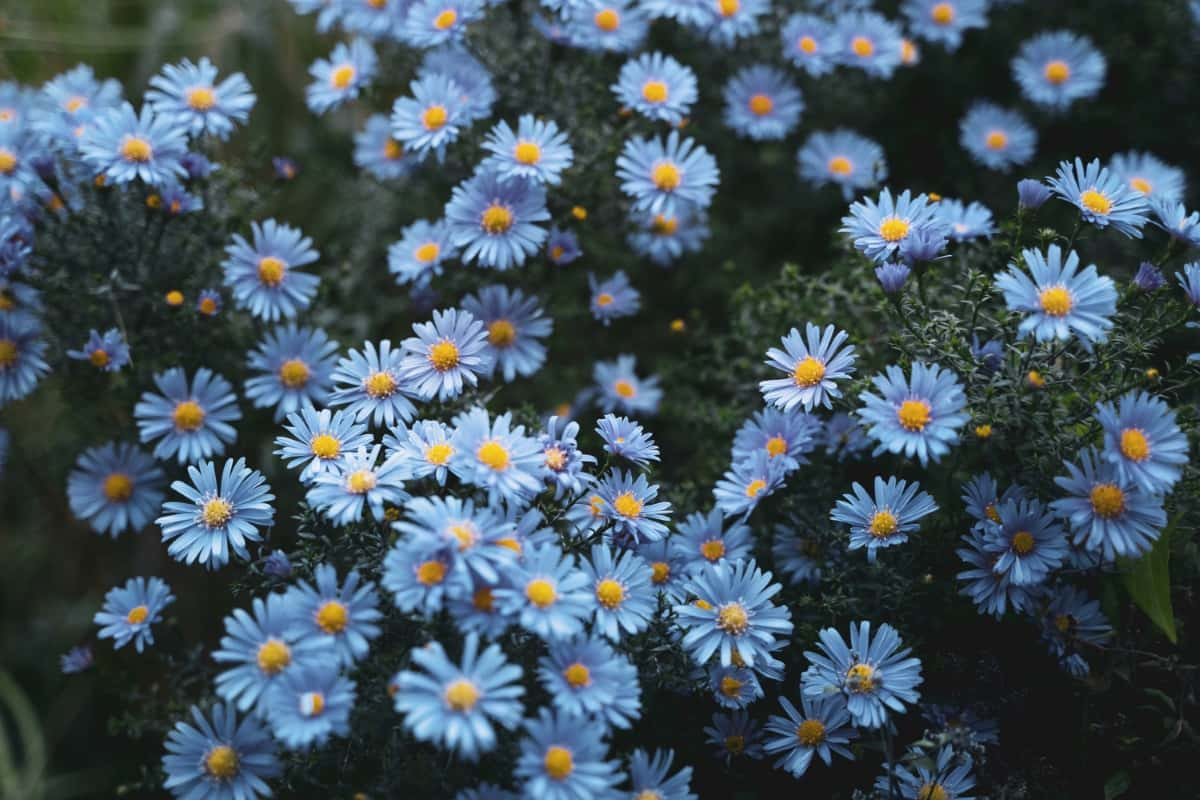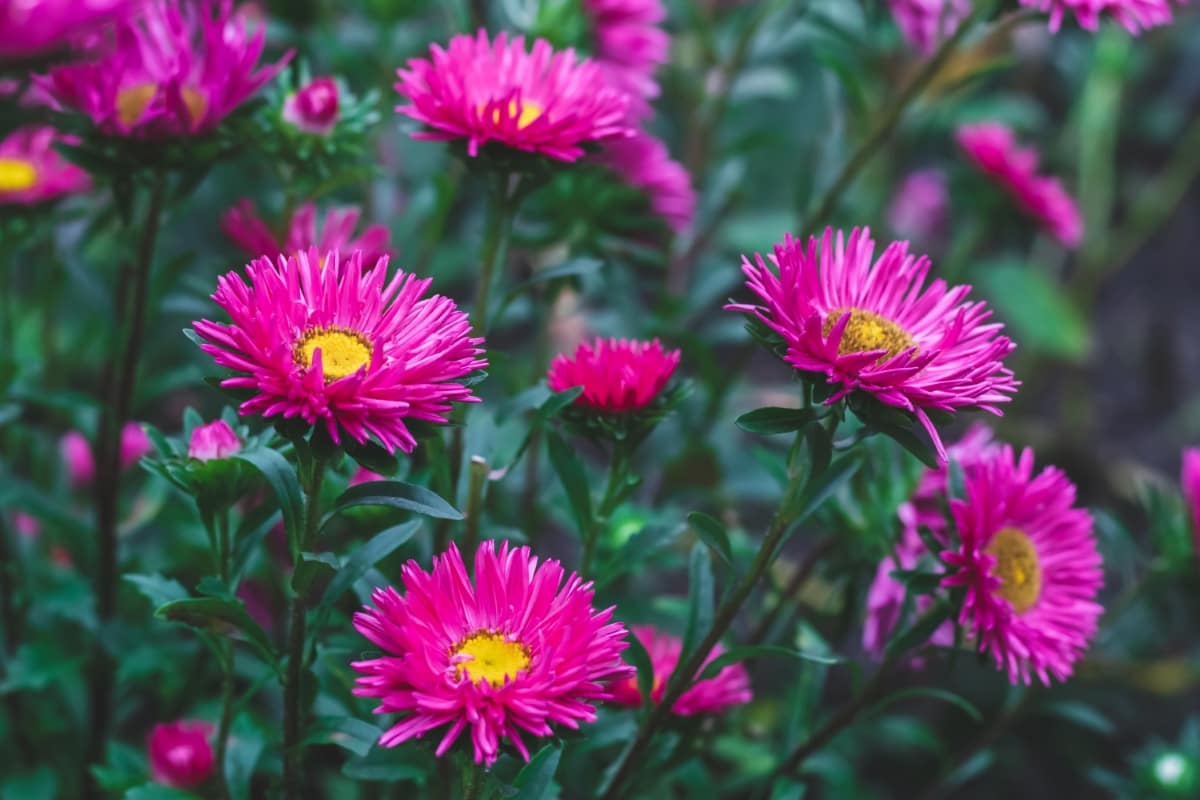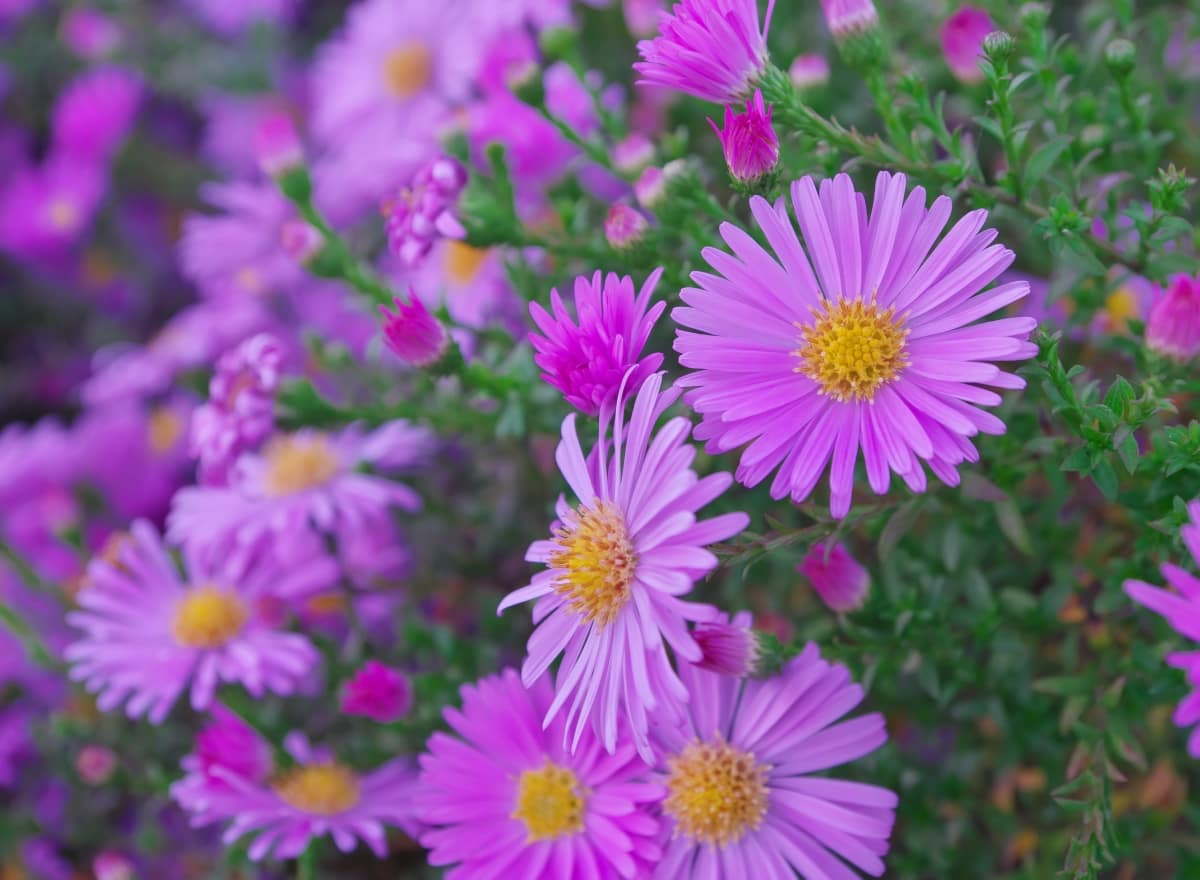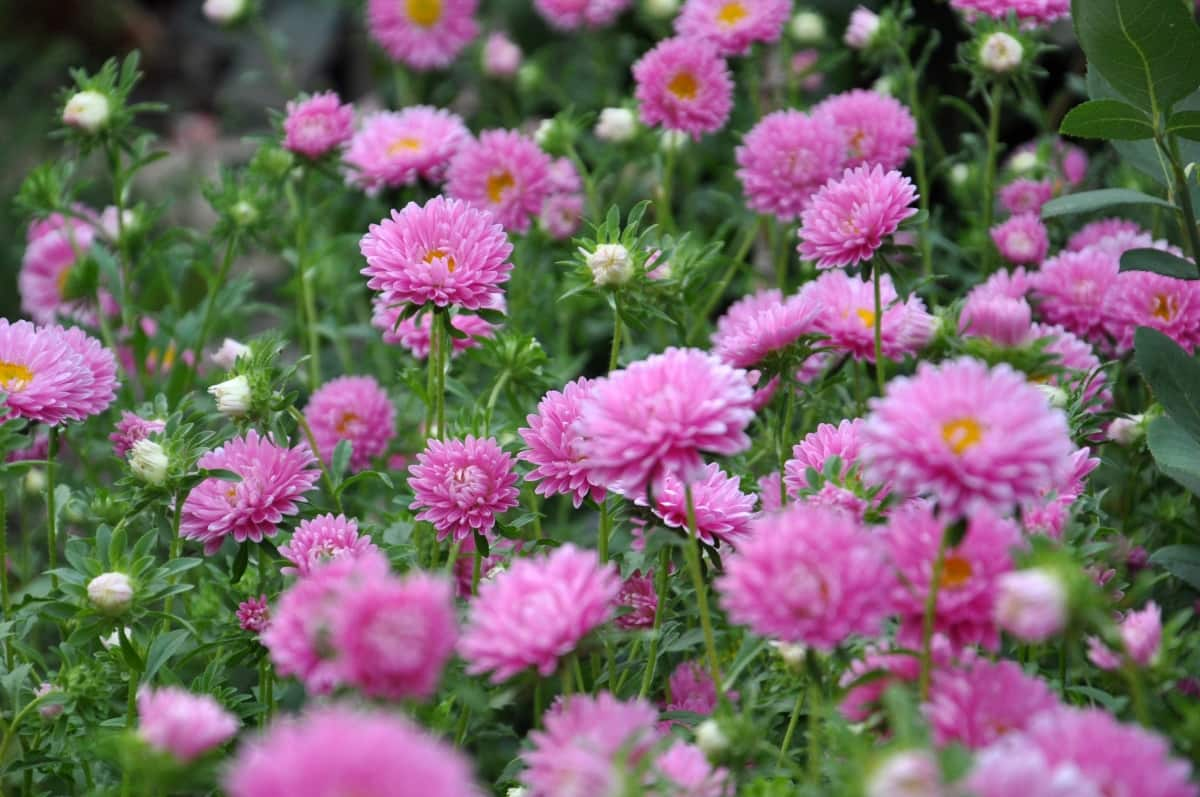Asters are beautiful flowering plants that grace gardens with their vibrant blooms. However, like other plants, they are susceptible to pests that can damage their health and aesthetics. In this guide, we will dive into various strategies to control aster pests, focusing on natural and organic treatments, understanding common culprits, and the importance of prevention.

How to Control Aster Pests Naturally
What is an Aster?
Aster, a flowering plant in the Asteraceae family, is known for its daisy-like flowers with a yellow or yellow center and colorful ray florets. The name “aster” comes from the Greek word for “star,” describing the shape of the flowers. Asters are native to various regions and are cultivated as ornamental plants, used in flower arrangements and gardens.
They are also important for pollinators, attracting bees and butterflies with their nectar-rich flowers. There are various species and cultivars, including New England asters, New York asters, and Michaelmas daisies. These late-season flowers are valuable additions to gardens when other flowers have faded.
Understanding Aster Pests: Identifying Common Pests and Their Damage
- Aphids: These tiny, soft-bodied insects feed on plant sap, causing curling leaves and stunted growth.
- Slugs and Snails: These slimy creatures chew holes in leaves, leading to unsightly damage.
- Leafhoppers: They feed on aster leaves, leaving behind stippled, yellowish marks.
- Spider Mites: These arachnids suck plant juices, causing discoloration and webbing on leaves.
- Whiteflies: These tiny, winged insects excrete honeydew, leading to sooty mold on asters.
- Caterpillars: Various caterpillar species chew on aster leaves and flowers, defoliating the plants.
- Thrips: These slender insects puncture aster cells, causing silver streaks and leaf distortion.
Prevention is Key: Implementing Effective Strategies to Control Aster Pests
- Companion Planting: This involves strategically planting aster-friendly companions like marigolds and chrysanthemums to deter pests.
- Crop Rotation: Rotate the location of your asters every few years to disrupt the life cycle of soil-dwelling pests.
- Adequate Spacing: Proper spacing between plants encourages air circulation, reducing the risk of fungal diseases.
- Sanitation: Remove fallen leaves and debris, which can harbor pests and diseases.
- Healthy Soil: Ensure your soil is rich in organic matter and well-draining to promote plant vigor.
- Diverse Plantings: A diverse garden attracts beneficial insects that naturally control pest populations.
- Watering Practices: Water in the morning to allow foliage to dry, reducing fungal growth opportunities.
Natural Remedies for Aster Pest Control: Harnessing the Power of Companion Planting
Companion planting is a natural and organic method that utilizes the interactions between different plant species to deter pests. By selecting compatible neighbors for your asters, you can create a more pest-resistant environment.
- Marigolds: Their strong scent deters aphids, nematodes, and other pests.
- Chrysanthemums: They contain pyrethrin, a natural insect repellent, and are effective against aphids and nematodes.
- Garlic and Onions: Their pungent odor repels various pests.
- Lavender: Attracts beneficial insects while deterring pests like moths and fleas.
In case you missed it: How to Control Peony Pests Naturally: How to Get Rid of Them with Natural and Organic Treatment

Organic Treatments for Aster Pests: Utilizing Safe and Environmentally Friendly Solutions
- Neem Oil: It is much more effective against aphids, whiteflies, and other soft-bodied insects.
- Insecticidal Soap: These soaps disrupt the cellular structure of pests like aphids and spider mites.
- Diatomaceous Earth: A natural desiccant that damages the exoskeletons of crawling insects.
- Homemade Remedies: Mixtures of garlic, hot pepper, and soap can deter pests when sprayed on plants.
Creating a Healthy Garden Ecosystem: Attracting Beneficial Insects to Combat Aster Pests
- Ladybugs: Devour aphids and other soft-bodied insects.
- Parasitic Wasps: Lay eggs on caterpillars, effectively controlling their populations.
- Predatory Beetles: Feed on a variety of pest insects.
- Hoverflies: Larvae consume aphids, making them excellent aphid controllers.
Homemade Pest Repellents: DIY Recipes to Deter Aster Pests Naturally
Garlic and Chili Pepper Spray
Ingredients
- One garlic bulb
- Two hot chili peppers
- 1 quart of water
Instructions
- Crush the garlic and chop the chili peppers.
- Add them to a quart of water and bring it to a boil.
- Let the mixture cool, strain it, and pour it into a spray bottle.
- Apply the solution to your asters every few days to repel pests.
Soap Spray
Ingredients
- Two tablespoons of liquid dish soap
- 1 gallon of water
Instructions
- In a spray bottle, combine the water and the soap.
- Apply it to your asters, targeting pests like aphids and spider mites.
Physical Barriers and Traps: Physical Methods to Keep Aster Pests at Bay
- Row Covers: Use lightweight fabric covers to block insects from reaching your asters.
- Copper Tape: Surround your planters with copper tape to deter slugs and snails.
- Beer Traps: Sink shallow beer containers into the soil to attract and drown slugs and snails.
- Sticky Traps: Hang sticky traps to catch flying pests like whiteflies and thrips.
In case you missed it: How to Control Violet Pests Naturally: How to Get Rid of Them with Natural and Organic Treatment

Soil Management Techniques: Enhancing Soil Health to Reduce Aster Pest Infestations
- Organic Matter: Amend your soil with compost to improve its structure and nutrient content.
- Proper pH Levels: Test your soil and adjust pH for optimal plant health.
- Mulch: Apply organic mulch to regulate soil temperature and moisture, reducing stress on asters.
- Regular Aeration: Aerated soil allows roots to access oxygen and nutrients more effectively.
Proper Watering and Fertilization Practices: Maintaining Vigorous Asters to Resist Pests
- Watering: Provide consistent moisture, avoiding both drought and overwatering.
- Fertilization: Use balanced, organic fertilizers to nourish your asters without overstimulating growth.
Stressed or malnourished plants are more susceptible to pest damage, so maintaining appropriate watering and fertilization schedules is essential.
Integrated Pest Management (IPM) for Asters: A Holistic Approach to Pest Control
- Monitoring: Regularly inspect asters to detect pest problems early.
- Thresholds: Determine at what point pest populations require intervention.
- Biological Control: Promote natural predators and beneficial insects.
- Cultural Practices: Implement practices like companion planting, soil management, and sanitation.
- Chemical Control: As a last resort, use chemical treatments with negligible environmental impact.
Aster Pests Control with Natural and Organic Treatment
| Pest | Natural/Organic Treatment | Additional Information |
| Aphids | Neem oil, insecticidal soap | Neem oil acts as a repellent and disrupts aphid feeding. Insecticidal soap suffocates aphids and other soft-bodied pests. |
| Slugs and Snails | Copper tape, beer traps | Copper tape creates an electric shock effect when slugs and snails contact it. Beer traps attract and drown these pests. |
| Leafhoppers | Soap spray, sticky traps | Soap spray disrupts leafhopper feeding. Sticky traps catch leafhoppers as they fly or jump onto them. |
| Spider Mites | Neem oil, diatomaceous earth | Neem oil is effective in suffocating and repelling spider mites. Diatomaceous earth damages their exoskeletons. |
| Whiteflies | Neem oil, garlic and chili spray | Neem oil disrupts whitefly feeding and breeding. Garlic and chili spray deters and repels whiteflies. |
| Caterpillars | Hand-picking, Bt (Bacillus thuringiensis) | Hand-picking is a physical removal method. Bt is a natural bacterium that targets caterpillars. |
| Thrips | Soap spray, sticky traps | Soap spray disrupts thrip feeding. Sticky traps catch thrips in flight or as they crawl onto them. |
In case you missed it: How to Control Carambola Pests Naturally: How to Get Rid of Them with Natural and Organic Treatment

Frequently Asked Questions (FAQs) on Aster Pests
Are There Any Plants that Naturally Repel Aster Pests?
Yes, plants like marigolds, chrysanthemums, and garlic can help deter common aster pests when planted nearby.
Can I Use Chemical Pesticides on My Asters?
While chemical pesticides are an option, it’s best to explore natural and organic methods first to minimize environmental harm and beneficial insects.
How Often Should I Inspect My Asters for Pests?
Regular inspections, at least once a week, are recommended to catch pest problems early.
What are the Signs of Aster Pest Damage?
Signs of aster pest damage can include discolored leaves, holes, stippling, curling, and pests on the plant.
Conclusion
Using natural and organic approaches to control aster pests not only protects the health of your garden but also helps to create a more environmentally friendly and sustainable system. By understanding the pains, preventing infestations, and adopting a combination of these strategies, you can enjoy the beauty of your asters while keeping the problems at bay. Remember, a healthy garden ecosystem with diverse beneficial insects and well-maintained soil is the key to long-term success in aster pest control.
- Beneficial Insects in Pest Management
- Natural Solutions for Pest Control in Flower Gardens
- Types of Fungicides Used in Agriculture
- Common Issues in the Fruit Development Stage of Pomegranate Farming
- Fruit Development Issues in Papaya: Easy Solutions and Treatment
- Soil-Borne Diseases and How to Protect Your Plants
- Practices to Prevent Disease Spread in the Garden
- From Wilted to Thriving: How to Treat Root Rot Naturally in Houseplants
- Natural Remedies to Cure Brown Spots on Fig Tree Leaves